Out of Minnesota’s 54 million acres of land, there are nearly 17.6 million acres of woods and forests. In other words, approximately 34% of the state is forestland, so it’s no wonder 246 bird species were recorded there.
Aside from the forests, there are also 66 state parks and six national parks, offering enough area for the birds to nest, breed, and migrate.
Out of the 246 bird species in the state, 12 species of owls live and breed in Minnesota’s forests. Here’s a roundup of the owls in Minnesota, their behavior, and their remarkable traits.
Short-Eared Owl
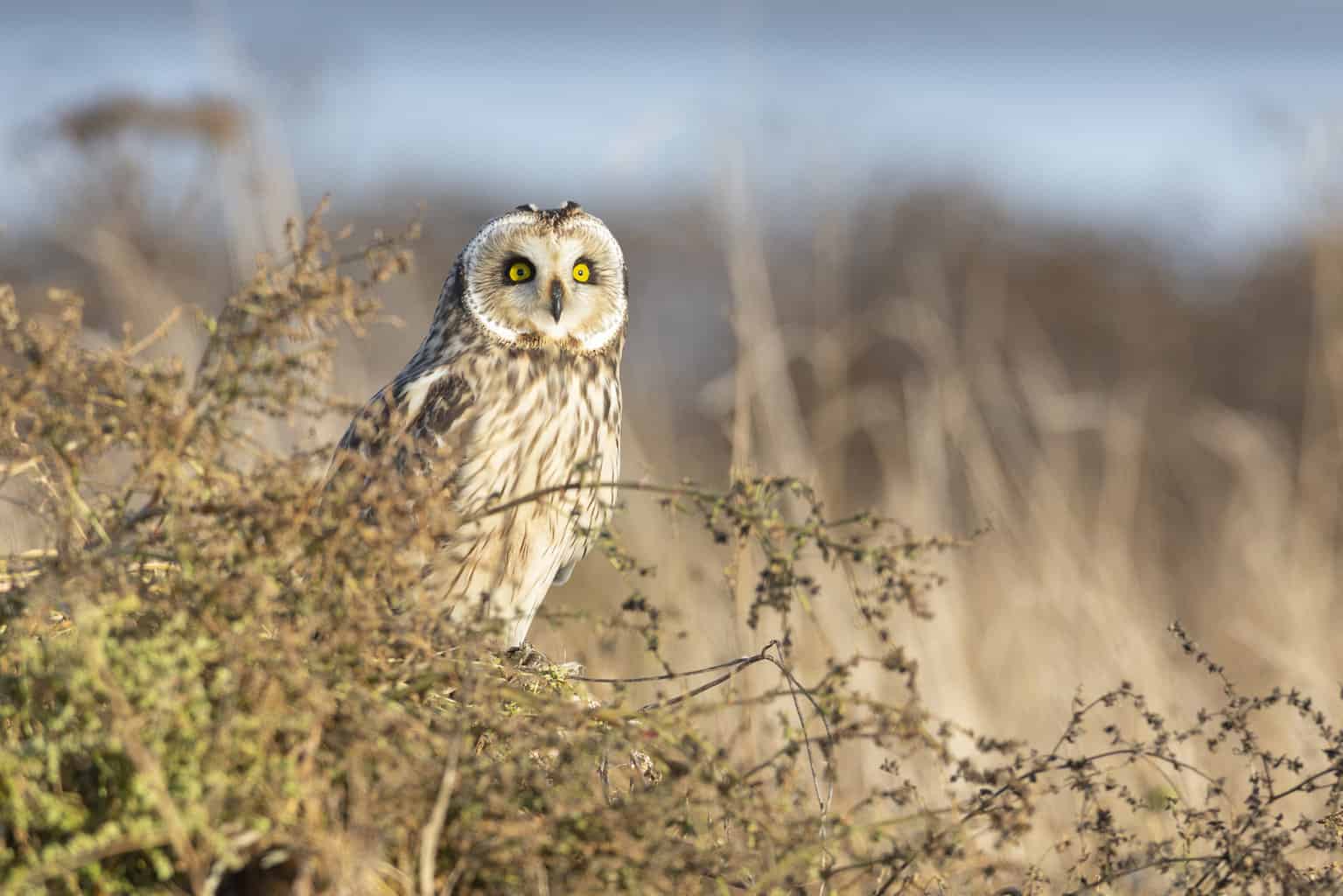
- Scientific Name: Asio flammeus
- Length: 13 – 17 inches
- Weight: 7.3 – 16.8 ounces
- Wingspan: 33.5 – 40.5 inches
The Short-eared owl is an elusive creature. It flees from its predators by pretending to be dead, and it sometimes acts crippled to protect its nest. It’s best known for the short ear tufts on its head, hence the naming.
Short-eared owls only spend their breeding season in Minnesota, and they mostly stay in the northern regions. However, some of them spend the whole year in the far south of the state.
Long-Eared Owl

- Scientific Name: Asio otus
- Length: 13.8 – 15.8 inches
- Weight: 7.8 – 15.5 ounces
- Wingspan: 35.5 – 39.5 inches
Long-eared owls mainly spend their breeding season in Minnesota, but some of them stay year-round in the state’s south. They aren’t common, but you can catch them if you know where to look.
These owls have long ear tufts on their heads, making them look a bit like Great Horned owls. They have smaller bodies, though.
Your best chance of catching Long-eared owls is in heavily forested areas. They also spend most of their time in open areas for hunting.
Barn Owl
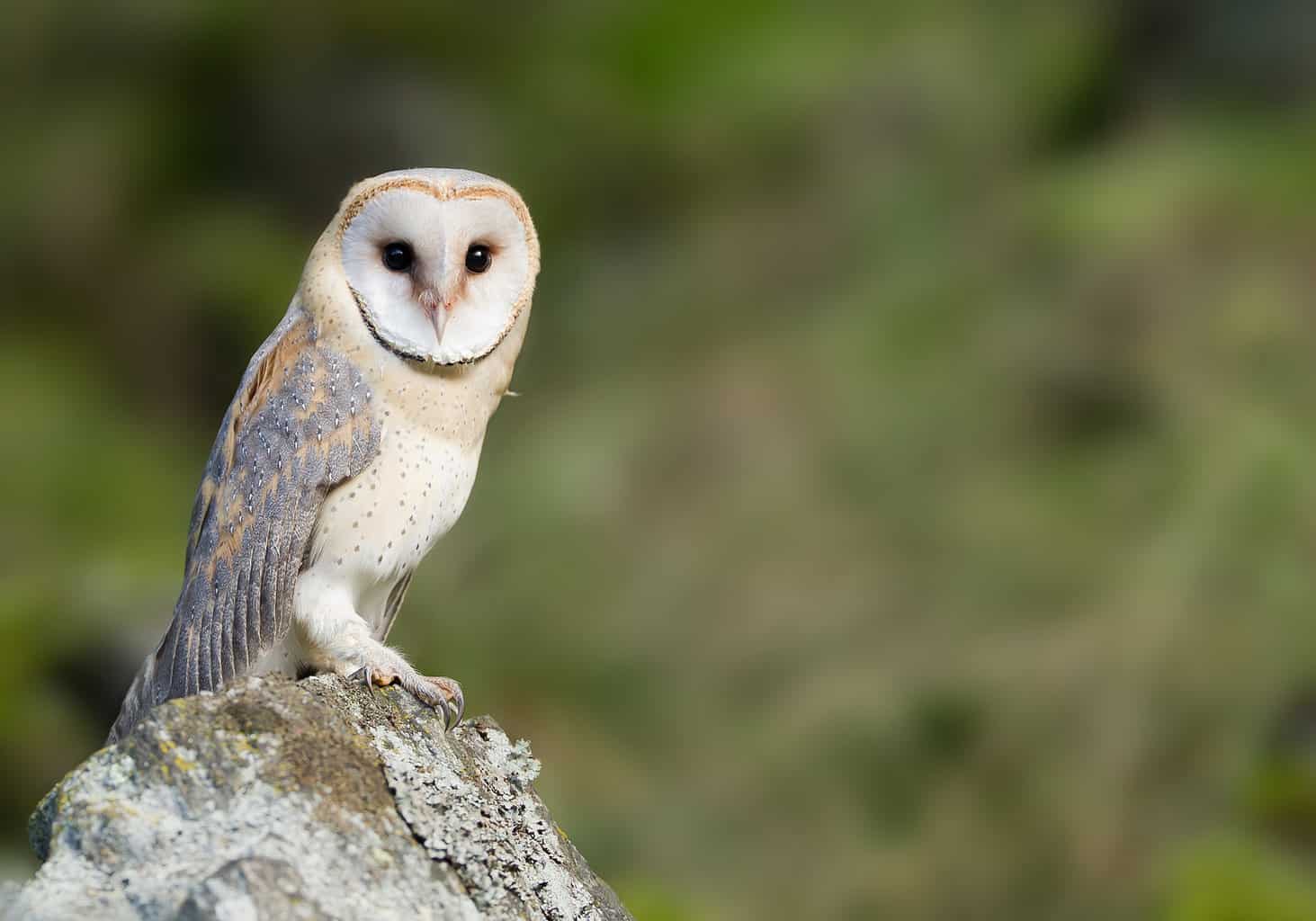
- Scientific Name: Tyto furcata
- Length: 13 – 15 inches
- Weight: 1 – 1.3 pounds
- Wingspan: 42 – 43.3 inches
Barn owls are the most common in the US, so it’s no wonder they live in Minnesota too. Their numbers are on the increase in the state’s south. Some of them live in the northern regions, but they’re not too common there.
Barn owls live up to their name, nesting in abandoned barns and houses. They also take cover in hollow tree trunks.
You’ll easily recognize these owls, thanks to their distinctive white facial discs. Bear in mind that they’re nocturnal, so catching them during the day is rare.
Burrowing Owl
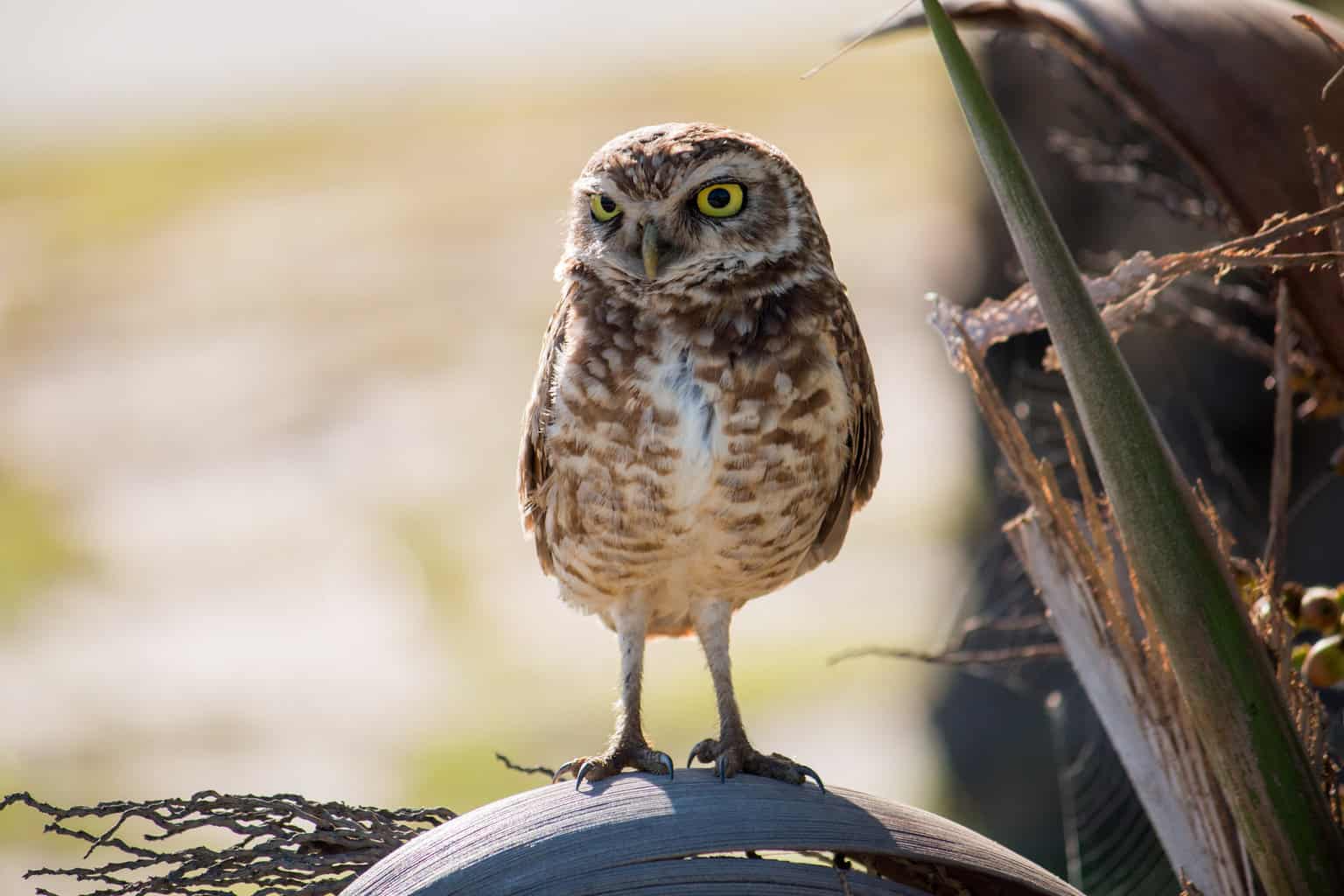
- Scientific Name: Athene cunicularia
- Length: 8 – 11 inches
- Weight: 5.5 – 8.5 ounces
- Wingspan: 21 – 24 inches
Burrowing owls live in burrows underground abandoned by other animals. Their numbers are declining because of the lack of burrows; they’re unable to live above the ground.
In Minnesota, these owls are mostly near the Western border during their mating season. They migrate to warmer areas when winter comes around.
You won’t find it hard to catch a Burrowing owl. They spend most of their time hunting, even during the day. On top of that, they’re known for appearing in suburban areas, including cemeteries.
Barred Owl
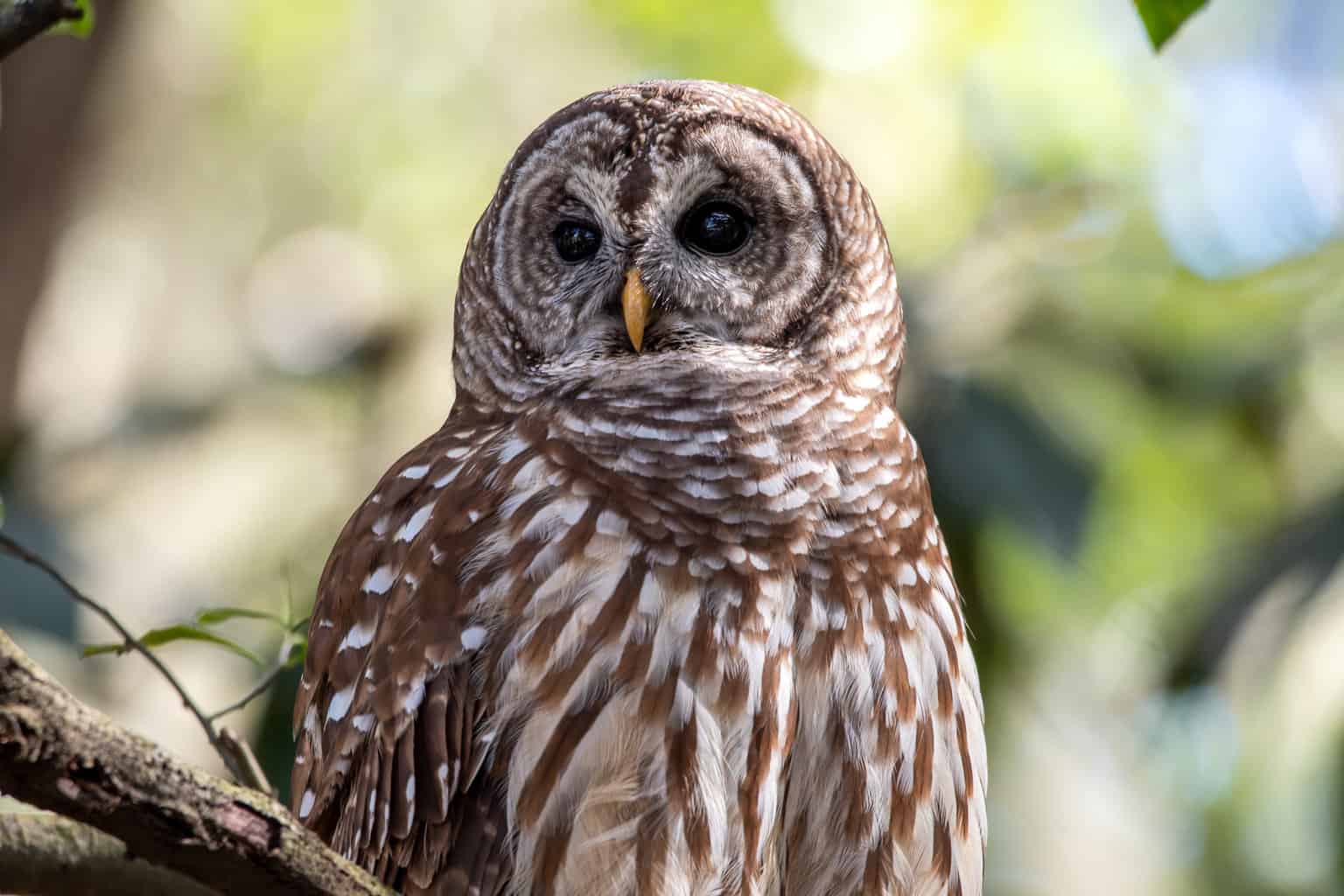
- Scientific Name: Strix varia
- Length: 16 – 25 inches
- Weight: 1 – 2.75 pounds
- Wingspan: 38 – 49 inches
When it comes to camouflaging, Barred owls have impeccable skills. Their barred bodies help them hide against tree trunks, so any passerby will think they’re a part of the tree.
They mainly do it to escape Great Horned owls, which are their most notorious predator. Sometimes, they even walk up tree trunks to protect themselves.
These owls are among the scariest species, and they have large, intimidating bodies. You’ll want to take care if you come near one.
Barred owls are permanent residents in Minnesota, and they’re spread throughout the whole state. Your best chance at catching them is in forests and woodlands close to water.
Snowy Owl
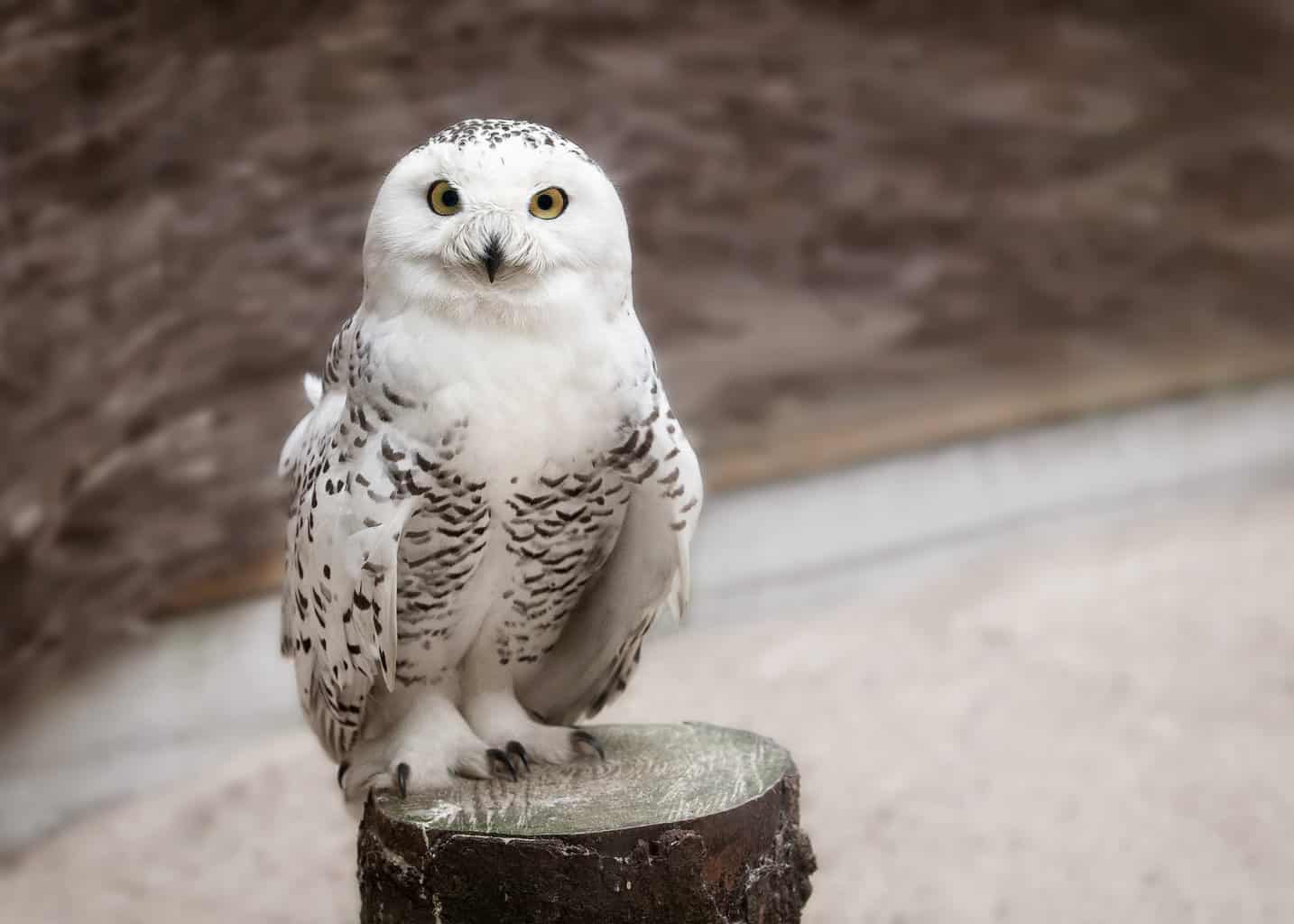
- Scientific Name: Bubo scandiacus
- Length: 20.7 – 25 inches
- Weight: 3.3 – 4 pounds
- Wingspan: 47 – 60 inches
Snowy owls are generally uncommon in the US because they prefer arctic areas. However, some of them were sighted in a few states, Minnesota included. Most of the sightings in the state were near the northwest regions.
If you’re lucky enough to see a Snowy owl, you’ll stop in your tracks. They have pristine white bodies, covered by some scattered gray spots. As they get older, their bodies get even whiter.
These owls are beautiful but don’t get tricked by their appearances. They’re among the scariest birds on the planet, and they viciously attack animals twice their size.
Boreal Owl
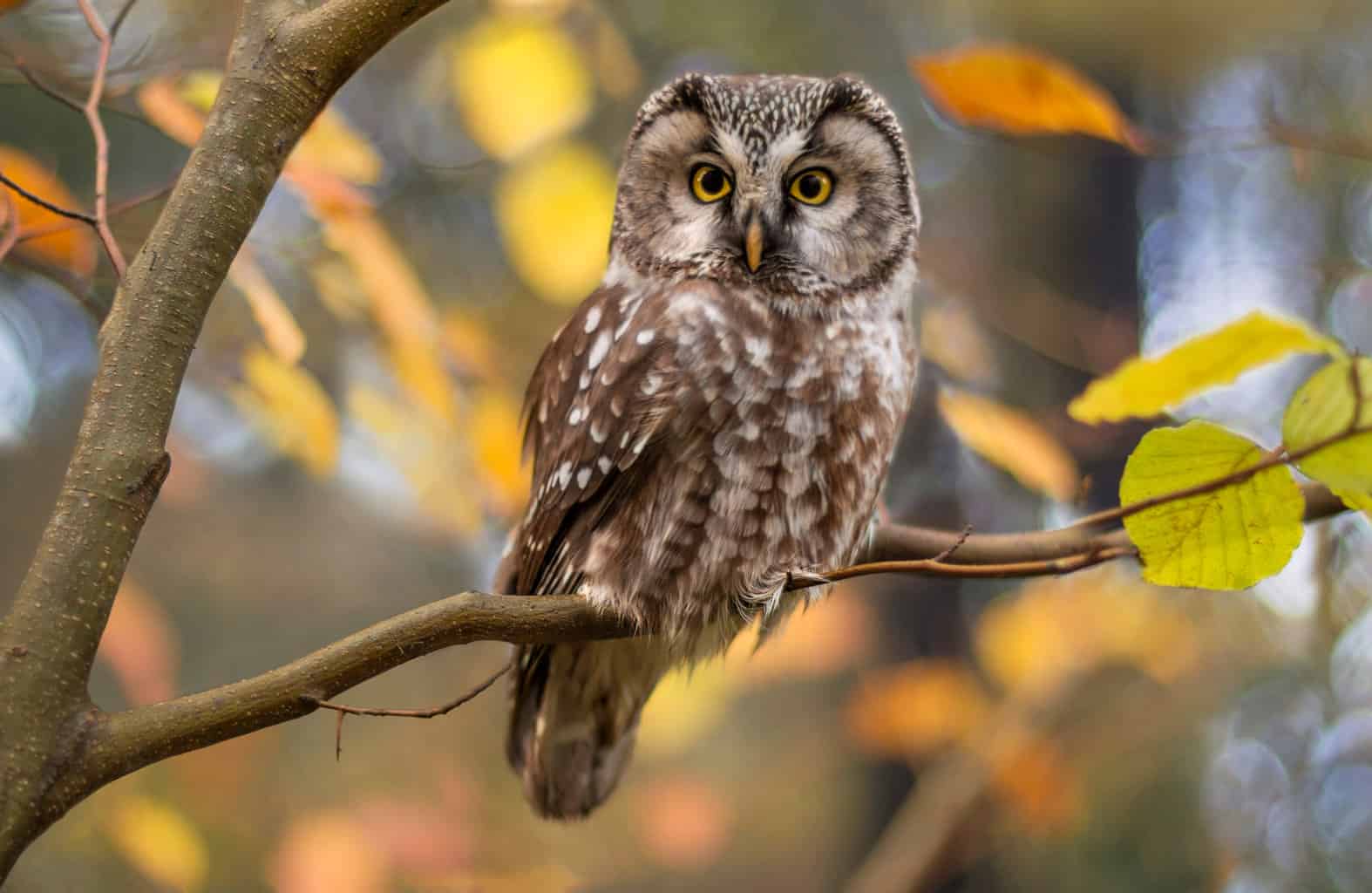
- Scientific Name: Aegolius funereus
- Length: 9.5 – 11.5 inches
- Weight: 3.5 – 7 ounces
- Wingspan: 22 – 24 inches
Boreal owls have adorable scrunchy faces that make it hard to believe they’re prey birds. Their bodies are small and stocky, and their tails are short. Some of them have streaked bodies, while some of them are spotted.
Boreal owls are non-vocal, so you’ll rarely hear them call out. Your best chance of catching them is by looking in coniferous forests and dense woods.
They’re generally hard to catch because of their mysterious nature. However, they perch low, near the ground, so you may get lucky and catch one of them while it’s looking for prey.
In Minnesota, Boreal owls spend the whole year in the northernmost parts.
Northern Saw-Whet Owl
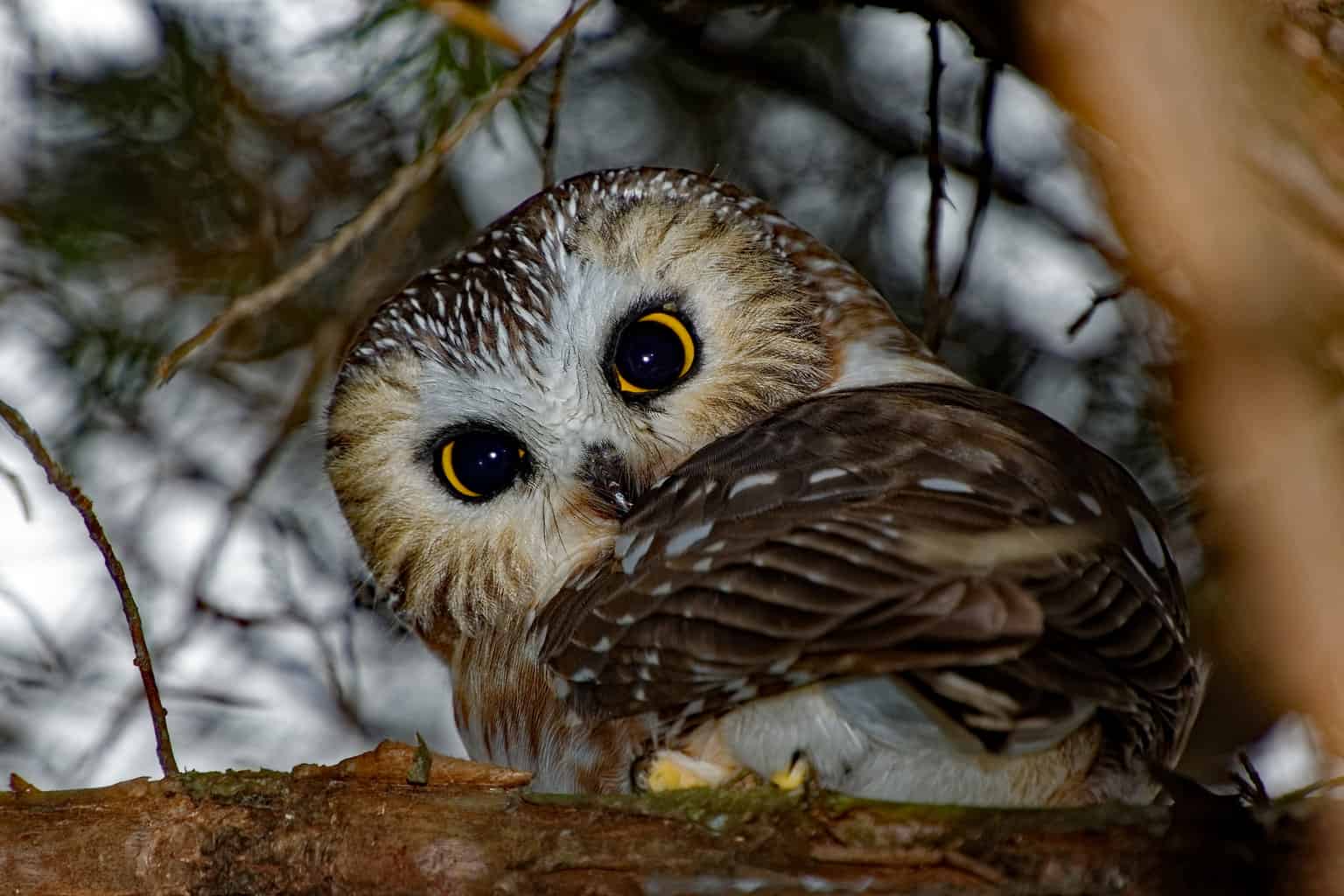
- Scientific Name: Aegolius acadicus
- Length: 7 – 8.3 inches
- Weight: 2.3 – 5.5 oz
- Wingspan: 16.5 – 19 inches
Northern Saw-whets are beautiful. They have round yellow eyes surrounded by dark feathers that look like lashes. They’re also exceptionally small, giving them an overall adorable look.
The owls have a brown plumage that helps them camouflage against trees to escape predators.
The small size isn’t the only reason these owls are hard to catch. They’re also secretive by nature, preferring to lay low and not make their presence known. These owls are only active during the night, and they mostly perch on trees in silence.
Saw-whets spend the whole year in Minnesota, scattered across its forests and parks.
Northern Hawk Owl
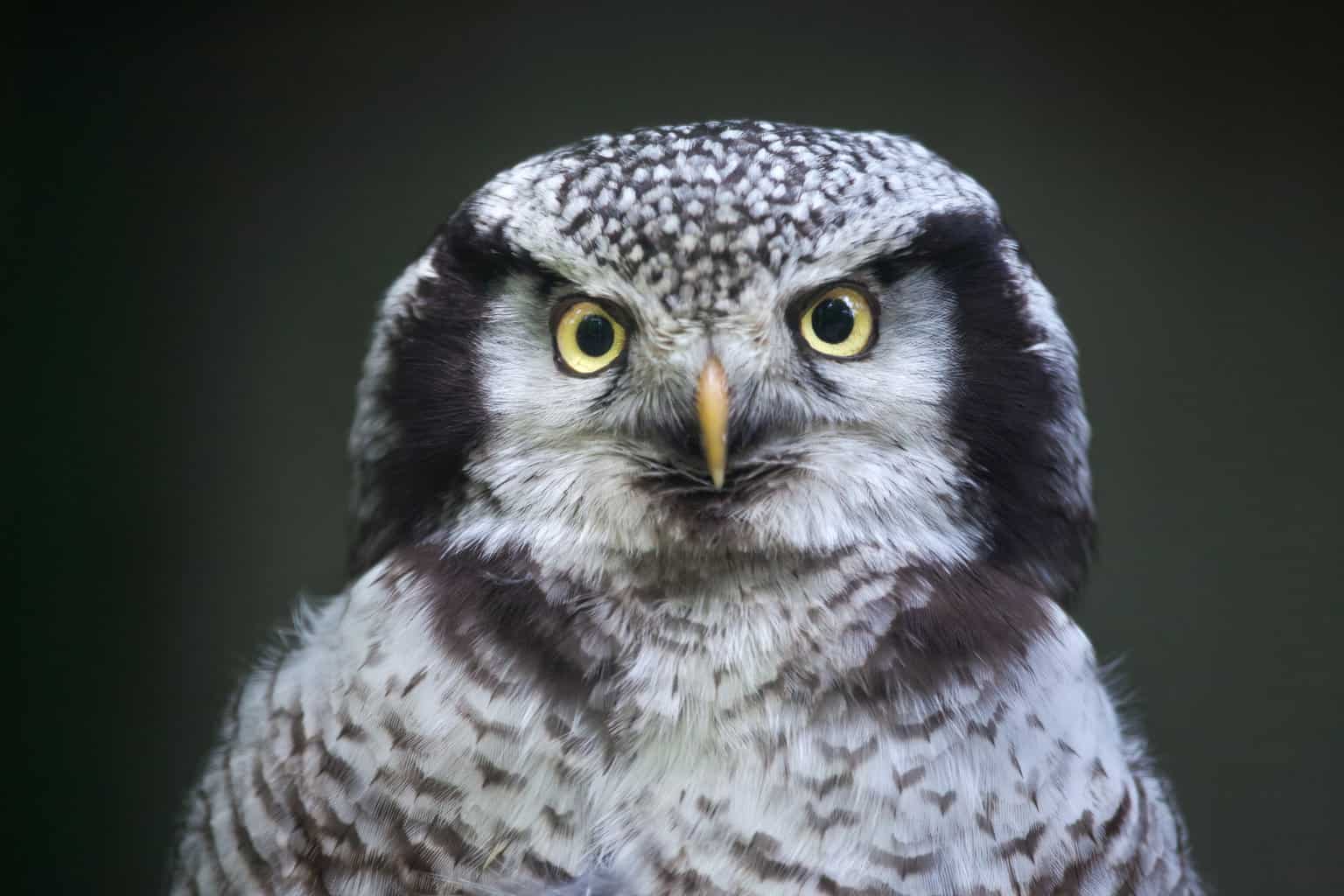
- Scientific Name: Surnia ulula
- Length: 14.3 – 17.8 inches
- Weight: 12 ounces
- Wingspan: 30 – 35 inches
The Northern Hawk owl is one of the rarest species in Minnesota, but you may get lucky. A few sightings of it were recorded near the state’s southern border. They mainly live in Canada’s boreal forests, but they migrate to some states when food gets scarce.
As opposed to most owls, Northern Hawk owls aren’t nocturnal. They hunt during the day, so you have a high chance of catching them under the sunlight. One of the reasons they do this is their poor hearing. They depend majorly on their sight for hunting.
Great Horned Owl
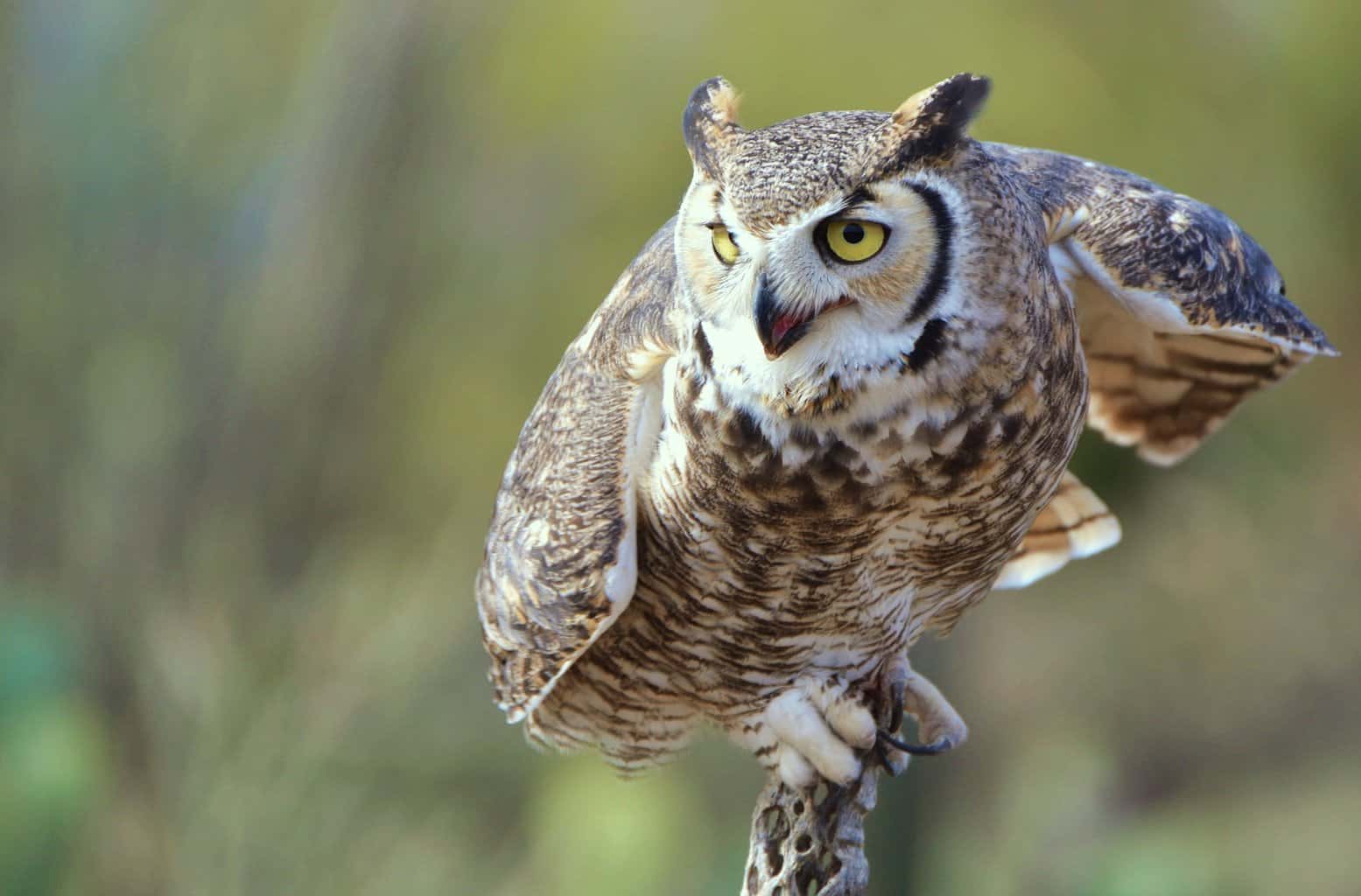
- Scientific Name: Bubo virginianus
- Length: 17 – 25 inches
- Weight: 2.5 – 4 pounds
- Wingspan: 36 – 60 inches
Great Horned owls are notorious prey birds. They have long ear tufts that give them a demonic appearance, and their large size makes them even more intimidating.
They’re known for feeding on fellow species and other prey birds. In fact, they’re partially the reason barred owls’ numbers are declining; because they feed on their populations.
Great Horned owls are pretty common in the US, and they’re spread throughout Minnesota. You can see them in any open or heavily-forested area. They like to make their presence known, so it won’t be challenging to see one of them.
Great Gray Owl

- Scientific Name: Strix nebulosa
- Length: 25 – 33 inches
- Weight: 1.5 – 4 pounds
- Wingspan: 60 inches
Great Gray owls are far from pretty. As a matter of fact, they’re known for their scary faces and exceptionally large bodies. They’re the largest owl species in North America, and they have an aggressive nature.
Unlike Great Horned owls, Great Grays don’t like attention, so they tend to be elusive to avoid being seen. They spend most of their time in dense pine forests, and you may find them in meadows. They’ll mostly be in areas away from humans.
Great Gray owls stay in Minnesota outside of their mating season. They only stay in the northern half of the state.
Eastern Screech Owl

- Scientific Name: Megascops asio
- Length: 6.3 – 9.8 inches
- Weight: 4.2 – 8.6 oz
- Wingspan: 18 – 24 inches
Eastern Screech owls have short, stocky bodies, and they don’t have visible necks. They’re easily identified by the fake ear tufts on their heads. Their real ears are on the side, paralleling their eye line. They mostly use their fake tufts to communicate with other owls.
These owls spend most of their time in wooded areas. They stay in Minnesota for the entire year, but they only stay within the Southern regions.
You’ll have to focus pretty well to catch Eastern Screech owls, they’re excellent at hiding, and their mottled feathers allow them to blend with the tree trunks.
Final Thoughts
Your chances of catching owls in Minnesota are pretty high, thanks to the large numbers of prey birds in the state. Out of the 12 species, you’ll definitely run across at least two or three breeds.
If you want to see other birds in the state, you can take a look at our lists of Woodpeckers and Hawks in Minnesota.

